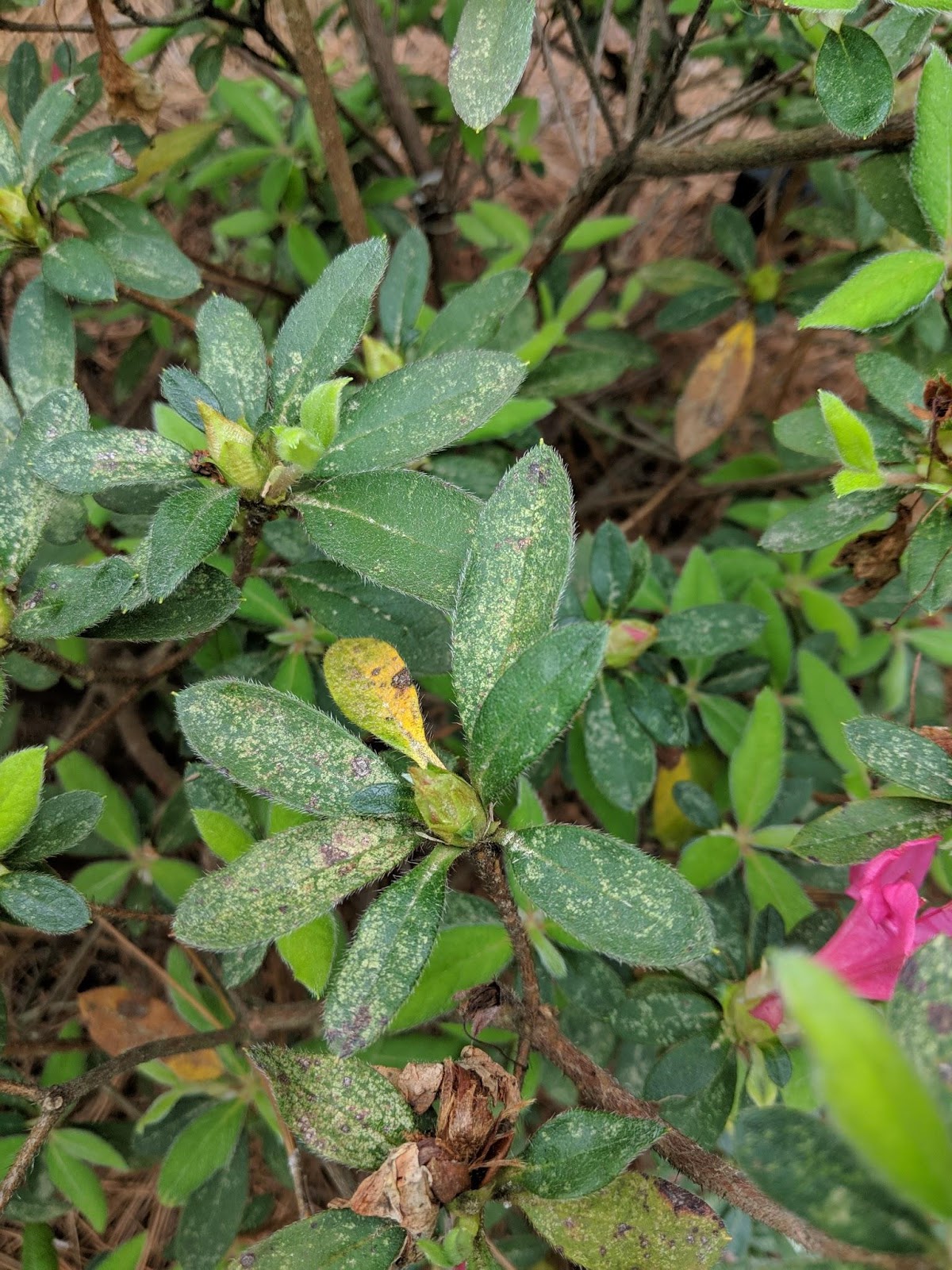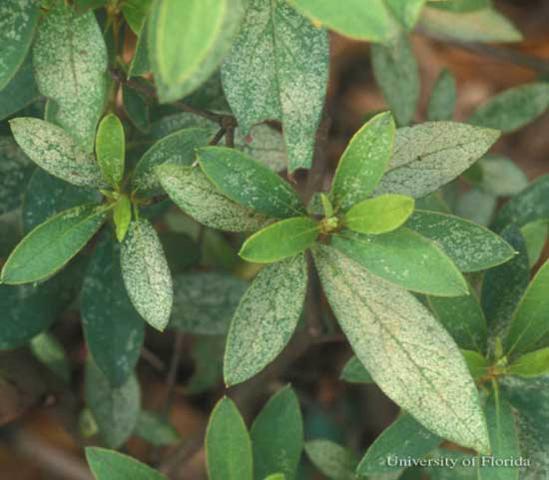CALL TO MEET WITH AN ARBORIST
704.525.3066 Charlotte
828.231.6008 Asheville
704.892.8927 Lake Norman
Azalea Lacebugs
What Are They?
Azalea lace bug (Stephanitis pyrioides) belongs to a group of insects in the family Tingidae. The insects in this family generally live and feed on the underside of leaves. They have thin lacy outgrowths on their thorax, and have delicate lace-like forewings.
Why Don’t We Like Them?
Infested azaleas develop stippled, bleached, silvery or chlorotic symptoms similar to those caused by mites. Azalea lace bug is a pest of major concern in the nursery industry due to this aesthetic plant damage. Even in established landscape planting, azalea lace bugs can cause considerable damage to foliage if not controlled early in the season when populations are low. Nymphs and adults cause damage by piercing and removing cell contents from leaf tissues. Because of the removal of most of the chlorophyll containing tissues located near the upper epidermis, the leaf surface becomes stippled, bleached, silvery or chlorotic.
What Can We Do?
Biological Control: There are a range of predators that feed on azalea lace bugs including azalea plant bugs, tree crickets, earwigs, green lacewings, minute pirate bugs, and spiders. The Rutgers publication mentions one nursery study concerning augmentation with green lacewing larvae against newly hatched azalea lace bug nymphs resulted in 79-97% control.


Cultural Control: Drought stressed plants are more susceptible to lace bug attack. Azaleas in the sun are reported to be nearly twice as likely to be infested. Planting azaleas in at least partial shade can prevent lacebug infestation.
Chemical Control: There are several strategies for managing lace bug. One can choose a biorational program based on incorporating products such as insecticidal soap, horticultural oil, and neem-based products. Insecticidal soaps and oils must directly contact the insects to control them and are most efficacious on newly hatched nymphs but can have 80-90% control if used correctly. Early season control is very important with these tools. Most of the remaining chemical options act either as contact insecticides or have systemic activity. Contact insecticides and some of the systemic insecticide may have a detrimental impact on beneficial insects.
GET LIVE UPDATES FROM HEARTWOOD TREE
Stay current with the updates, newsletter and our event schedule. We are passionate about increasing awareness about the diminishing canopy coverage of our planet and we’re always staying involved to continue to be a part of the solution.

